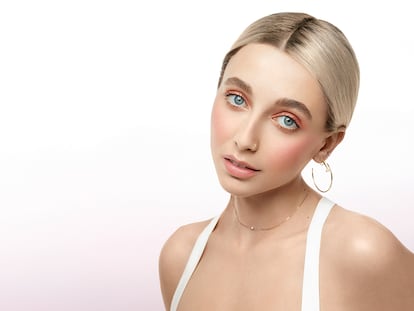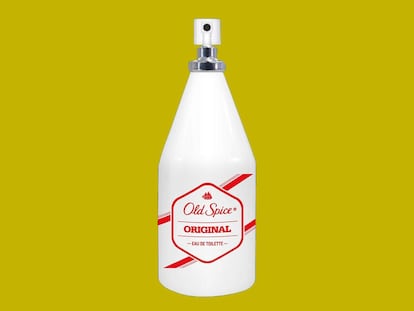The major problem with bleached armpits
Videos that praise white armpits are proliferating on social media, reflecting yet another artificial construction, an anti-human torment that seeks to demonize the naturalness of hyperpigmented hair

A young woman appears in a TikTok video lip-syncing over the following audio: “She says to me ‘oh, he left you and stayed with me.’ And I replied: ‘yes, but I have white armpits,’” she concludes, showing her white and depilated armpit. Below, there are a bunch of comments. The first one says in English: “I wish, I’ve tried everything.”
So, yes, it seems that now, in addition to life’s thousand aesthetic mandates, there is one that is... new? Well, actually, not so much. By now we know that beauty standards are capricious impositions that have been given the patina of false objectivity and that, as an artificial construction, have a contextual character. It is just one more anti-human torment.
Anti-human, yes, because pretending that the skin, the largest organ of the body, should be free of pimples, spots, scars or hairs, after a certain age, no matter how little one has lived, is either an impossible endeavor or costs money.
And hairs and spots sometimes go hand in hand, since the skin irritation caused by recurrent hair removal is one of the causes of hyperpigmentation, which can also occur in other areas. However, it is not the only reason; hyperpigmentation can also appear as a consequence of diabetes or insulin resistance. Esthetic physician Andrés F. Córdoba Gómez points out that dark skins are also prone to hyperpigmentation in areas of friction, which can be aggravated by metabolic diseases.
Therefore, before starting any treatment, whether at home or not, it is always best to go to a doctor to determine what is causing it. That is exactly what the Afro-Colombian digital content creator Cirle Tatis Arzuza, known in social media circles as Cirlepelobueno, recommends. Accompanied by dermatologist Sindy Rentería, she opened a can of worms on her Instagram profile when she decided to touch on this topic and linked it to the racist thinking that exists in her country: there are those who believe that Black women darken because dirt has penetrated their skin and is embedded in it.
Beyond the bleach ads, the identification between white and clean and black with a lack of hygiene has a long tradition. Take, for example, these verses by the 17th-century Spanish poet Francisco de Quevedo:
“They finished eating
and a Guinean minister came in,
to give them a water pitcher
with a coconut and a cauldron. For a towel he brought over his shoulder
the cloths of a burial.
They washed themselves and the water remained
to dirty a whole kingdom.”
Boda de negros [Black Wedding] is the name of the poem to which the excerpt belongs; it is from the famous Spanish Golden Age. There has been a lot of water under the bridge since those days, but nevertheless, there are still entrenched prejudices not only associated with the armpits, but also with other parts of the body that tend to have a darker tone, such as the groin, elbows and knees, because of the hyperpigmentation to which Dr. Córdoba alluded.
The thing is that what seemed to be just another post went viral and presented an excellent opportunity for many Black women who have not taken off their long sleeves or gone to the pool or the beach for years, no matter the weather, because of the embarrassment they feel when others see their hyperpigmented armpits. In fact, Cirle herself admits that she used to wear extensions or very long braids in order to cover them up so that they would not show in photos.
Her video had sequels, there was a second, a third and even a fourth instalment and all of them worked really well online. In the last one, she revealed some of the tricks that have helped her to lighten her own armpits: depilate less frequently and use scissors instead of wax or razors, reduce or eliminate from her routines the use of deodorants with aluminum and alcohol and sprays, and opt for other types of alternatives. Finally, she advised her followers to be patient because no remedy works immediately. She admits that it has taken her four years.
Dr. Córdoba laments that social media is altering the perception of hair, weight and skin through the use of filters that show models who are completely unrealistic. He points out that he prefers not to treat cases like the one in question because, while laser treatment could be a depigmenting option, the risk of post-treatment irritation exists and there is no guarantee of achieving the desired results. In his opinion, it is better to take precautions by avoiding mechanical or chemical hair removal, as they can lead to post-inflammatory pigmentation, especially in dark skin.
Sign up for our weekly newsletter to get more English-language news coverage from EL PAÍS USA Edition
Tu suscripción se está usando en otro dispositivo
¿Quieres añadir otro usuario a tu suscripción?
Si continúas leyendo en este dispositivo, no se podrá leer en el otro.
FlechaTu suscripción se está usando en otro dispositivo y solo puedes acceder a EL PAÍS desde un dispositivo a la vez.
Si quieres compartir tu cuenta, cambia tu suscripción a la modalidad Premium, así podrás añadir otro usuario. Cada uno accederá con su propia cuenta de email, lo que os permitirá personalizar vuestra experiencia en EL PAÍS.
¿Tienes una suscripción de empresa? Accede aquí para contratar más cuentas.
En el caso de no saber quién está usando tu cuenta, te recomendamos cambiar tu contraseña aquí.
Si decides continuar compartiendo tu cuenta, este mensaje se mostrará en tu dispositivo y en el de la otra persona que está usando tu cuenta de forma indefinida, afectando a tu experiencia de lectura. Puedes consultar aquí los términos y condiciones de la suscripción digital.
More information
Últimas noticias
NASA discovers Titan doesn’t have an ocean, but a ‘slushy ice layer’ that increases possibility of life
Innocence lost in the forest of the child soldiers: ‘Each leader of the armed group had his girls’
‘Fallout’ or how the world’s largest company turned an anti-capitalist apocalyptic Western into a phenomenon
From inflation to defending migrants: Eileen Higgins and Zohran Mamdani inaugurate the new Democratic resistance against Trump
Most viewed
- ‘El Limones’ and the growing union disguise of Mexican organized crime
- Christian Louboutin: ‘Young people don’t want to be like their parents. And if their parents wear sneakers, they’re going to look for something else’
- The low-cost creative revolution: How technology is making art accessible to everyone
- ‘We are dying’: Cuba sinks into a health crisis amid medicine shortages and misdiagnosis
- Liset Menéndez de la Prida, neuroscientist: ‘It’s not normal to constantly seek pleasure; it’s important to be bored, to be calm’










































